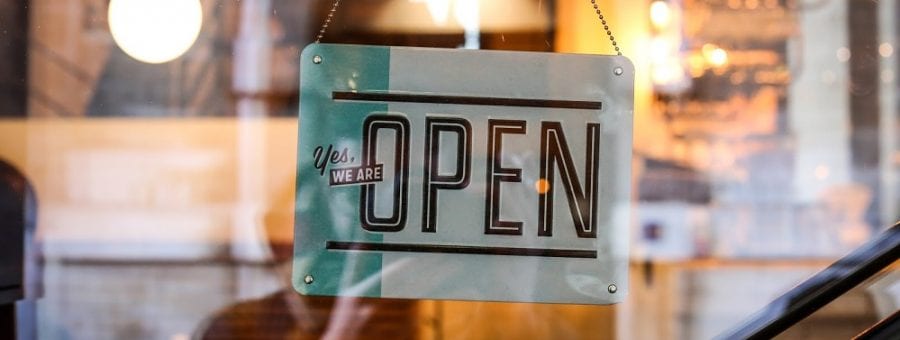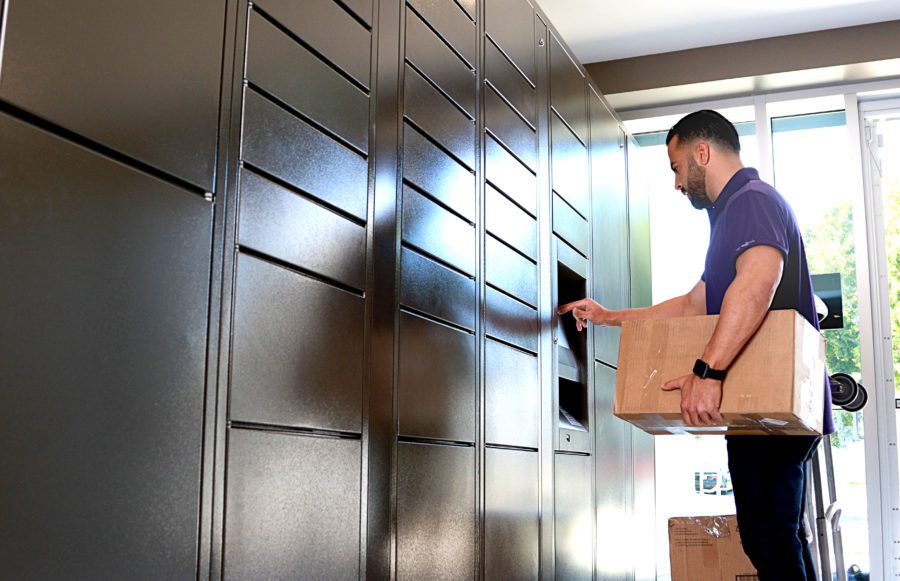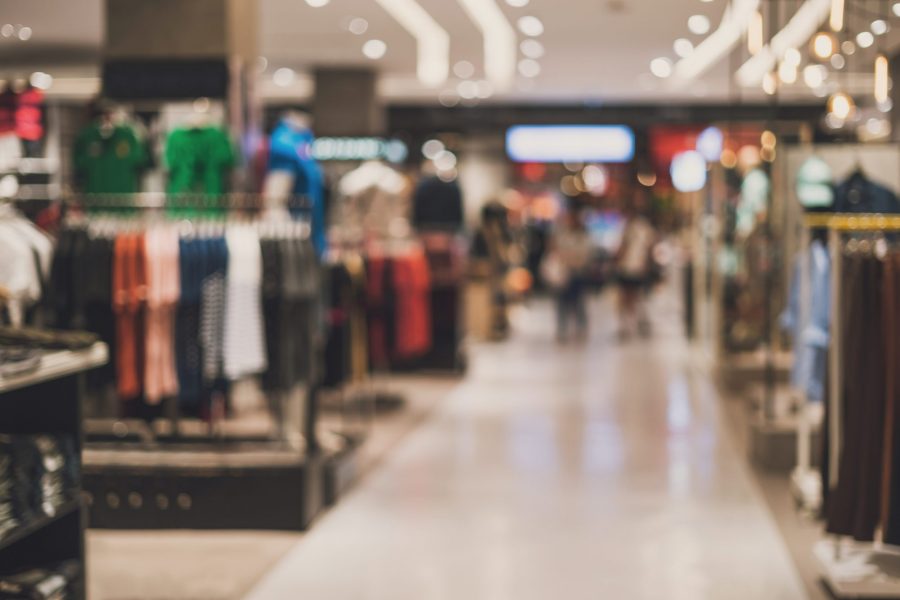
Retail
The Rise of Micro Retailing
Written by: Parcel Pending
10 Min Read
Published: May 13, 2019
Updated: March 29, 2023
When it comes to retail, new studies indicate that smaller is better. First came “micro visits,” where stores started noticing customers who spent less than five minutes shopping. These shoppers—primarily people who bought online and were picking up in-store—became the focus of retailers. Now, there’s a new trend hitting brick and mortar shops: micro retailing.
Micro retailing follows the idea of downsizing large stores (think IKEA or WalMart) in favor of smaller, boutique shops. These stores would still display a large selection of items; however, they would remove the necessity for backstock by having any purchase shipped to the customer’s home. It’s a new way of shopping, and stores are leaning into this new trend. But why? What are the upsides of micro-retail and how does this practice help brick and mortar retailers survive the rise of e-commerce?
To discover all the benefits of this retailing revolution and how to implement their strategies into your store, read on.
The Shift in Perspective
Conventional wisdom used to instruct brick and mortar stores to create an online presence as soon as possible because in-person shopping was on its way out. Yet, many online-only brands are opening up brick and mortar stores. Casper, an online mattress seller, is planning to open two hundred stores. Warby Parker, at least one hundred. And they’re not the only ones.
Who is Switching to Micro Retailing
There must be a reason for this counterintuitive switch. The list of benefits seems to grow as retailers increasingly move toward this trend. Not only do customers prefer these smaller, intimate shops, but retailers are content to spend a fraction of the cost of store space and invest in other areas. There are two types of retailers that are positioned to cash in on all these benefits:
- Online-only brands – Up until now, online-only brands haven’t had to pour money into storefronts and store employees, managers, etc., leaving them with extra capital to spend on this new venture. Plus, these smaller storefronts will be cheaper than a traditional shop, making the transition smoother.
- Large retailers – Companies the size of IKEA, Target, and Walmart are restructuring their business model with the intention of smaller, boutique shops. By downsizing their factory-sized stores into pop-up boardwalk shops, they can be in more places with less overhead. By centralizing their distribution, they are able to double down on shipping costs and save money on fronts.
This kind of restructuring requires massive dough, that’s why many smaller and mid-sized retailers are getting left behind. However, there’s no reason why they can’t implement many of micro retailing’s aspects to accrue some of the benefits.
Benefits of Micro Retailing
As mentioned above, both retailers and consumers benefit from this new retailing trend. Here are some upswings for the companies:
- Zero backstock – No selling out of an item. No having an employee “check the back” only to discover there’s no stock left. And for managers, no stressing about ordering too many or too few of an item. Micro retailing means only having one stock per item and having it on display. If a customer likes it, they buy it, and the product shows up at their doorstep the next day. This is one way a business can surpass customer expectations and keep up with the current retail trends.
- Smaller space, cheaper rent – The biggest incentive for retail chains is the idea of spending significantly less on space. Chains with over a thousand stores will see micro retailing as an investment in the future. They can put all this saved cash directly into a centralized distribution center, which will save on shipping and handling costs. Or they can reinvest in newer retail technology and marketing campaigns.
- Personalized Stores – With less backstock and few duplicates, aisles will feel spacious, and stores can seem personalized. And because there’s physically less stuff in the store, retailers can experiment with different designs to determine what customers prefer.
- Increased Number of Locations – Because these stores can be stripped down to their necessities, stores can pop-up in multiple locations within a city. These “skeleton shops” can act primarily as customer service hubs and online order pickup spots, with a few best-selling items lining the walls. Having additional stores offers the retailer increased brand awareness, and customers appreciate the easy access.
The major benefits for consumers include:
- No checkout lines –This might as well be the sole benefit of micro retailing. No waiting in long checkout lines! Because items aren’t taken out of the store with the customer, there’s no need to stand in line to buy them. Customers can just punch in what item they want into their phone and pay online.
- Improved customer experience – Micro retailing offers a less crowded way to shop. Because there are more stores and less product in the way, aisles will be open and breezy. Some micro retailers are trending toward hiring expert employees as well. Instead of having cashiers and stock managers in beauty retailers, the main employees can be fashion designers or makeup artists. This will improve customer experience and incentivize people to shop in person.
- Convenience – With additional shops available, consumers have better access to the brands they love. Plus, buying items and having them shipped home means no carrying around shopping bags from one store to the next.
Ways to Implement Micro Retailing
If you’re not an online-only brand thinking of expanding or a major retailer who has the capital to do a complete overhaul, there are still ways to implement micro retailing into your business model. Adopting some of these changes can keep you competitive in today’s retail climate.
Combining E-commerce With Brick and Mortar
If there’s one takeaway from online-only brands opening up brick and mortar shops, it’s that the old way of selling in person is over. This new wave of interactive retail experiences fuse the convenience of online shopping with the personal touch of a boutique shop.
Streamlining Sales
There’s no question that businesses need to be online and on multiple platforms. Not only is this important for marketing and brand awareness, but without this, most customers won’t even find your store. And for those who do, most shoppers are buying online anyway.
Streamlining your sales means being up to date with both your e-commerce site and your brick and mortar store. Customers should be able to bounce back between the two without confusion.
Micro retailing is utilizing streamlined sales to capitalize on two new methods of shopping.
BOPIS – Buy online, pick up in-store. This is the latest trend taking the industry by storm. Shoppers will purchase what they need on a retailer’s website, but still come to the store for any number of reasons.
- BOPIS drastically reduces shipping costs
- Customers can return the products if needed
- Physically seeing the product is an essential factor before taking it home
- Once in-store, consumers are more likely to purchase additional products
It’s such an important method of buying that upwards of 90% of retailers will offer this method of shopping by 2021, according to Invespcro. To make these transactions efficient, many companies are turning toward smart lockers. These provide customers the autonomy over their pickups by controlling the locker with their phone.
Buying online, while in-store – This is another popular method of purchasing items, especially among younger generations. After browsing the selection in person, shoppers will buy online and have it shipped to their home. This is ideal for customers who enjoy perusing aisles, but don’t want to lug around purchases or wait in long checkout lines. With no backstock to offer in micro retailing, this is becoming the default way to purchase items in person.
Introduce New Technology Into Stores
Micro retailers try to create a personalized, interactive experience within a small space. One way to do this is to bring technology that will keep customers engaged and enhance the buying experience. You’ve seen how grocery stores have implemented self-checkout aisles to speed up the lines. Well, companies across the globe have been experimenting with new technology to give their stores a similar appeal.
- Interactive mirrors – From trying on glasses to touching up your makeup, retailers have been craving interactive mirrors. Not only are they fun for customers, but also they’re driving up sales.
- Adaptive dressing rooms – For clothing retailers, having a changing room is essential. Customers are significantly less likely to purchase an article of clothing if they don’t know how it will look on them. Now, dressing rooms are upgrading. Instead of just standing in front of a tall mirror, adaptive dressing rooms will let you see the outfit in the morning, afternoon, and evening lighting. It also keeps track of everything you want and don’t.
- Smart retail lockers – As a customer, sometimes you want to leave the sales-type interactions to a minimum. Having smart retail lockers allow customers to buy online, pick up in-store, and leave satisfied. Simple and convenient.
Smaller and mid-sized retailers don’t have to deck out their floor with all the latest gadgets, but having a few upgrades can keep your store fresh and exciting for customers.
Comprehensive Delivery
Possibly the strongest pull for micro retailing with customers is the comprehensive delivery that’s offered. By downsizing stores and building up centralized distribution centers, massive retailers are starting to provide single-day or same-day delivery.
As a smaller retail business, competing with these rates is difficult unless you’re willing to spend a large percentage of the revenue on shipping costs. This is especially relevant as customers are increasingly demanding free delivery with their products. 75% of customers expect free delivery even on orders less than fifty dollars.
The price of free delivery is hard to gauge, especially when returns are expected to be paid for as well. To compete with this, partnering with new technology might be the only way.
Offer Customers Smart Lockers as an Alternative
Companies are turning to smart lockers to be able to offer “free delivery.” Instead of paying for packages to be delivered to 25 different apartments, they can all be shipped to a single smart locker location at the nearest convenience store (or wherever it’s placed). These centralized locations are not just cheaper for the retailer, but they’re helpful for customers too.
Porch Pirates, as they’ve been referred to in the past, steal packages left on doorsteps in record numbers. Some people have responded by ordering packages to work, but this method is inconvenient, and some workplaces look unfavorably on employees for doing this.
If you decide to install Parcel lockers into your retail store, there are two options for how you can use them.
- Same-store pickup only – Using smart lockers as a way for customers to buy online and pick up in-store is a great way to bring in customers. Try placing some best-selling items near the lockers to incentivize shoppers into making an additional purchase.
- Lockers open to anyone – Another option for using smart lockers is to have them be available for any delivery. This can incite micro shopping, where customers spend less than five minutes in a store. Groceries stores, coffee shops, and convenience stores have all found that adding a public smart locker means more customers who want to buy additional items. The downside is that a customer might purchase online what your store offers, thus helping a competing company close a sale.
Retailers That Benefit From Smart Lockers
There is a way for any retailer to utilize smart lockers to their advantage. It’s all about coming up with the right strategy. Here are some examples of retailers using smart lockers:
- Grocery Stores – Instead of using apps like Doordash and Amazon Fresh that deliver groceries to a customer’s doorstep, people can opt into picking up the groceries from refrigerated smart lockers. These lockers can be adjusted based on what the customer is shopping for. Frozen and refrigerated items can be kept in a cold locker. While regular groceries can be stored in normal lockers.
- Convenience stores – Stores like 7-Eleven have had success installing smart lockers into their stores. Because these shops are full of cheap, tasty items, they find that sales increase as customers come to use the lockers.
- Pharmacy – Because of the risks associated with delivery, pharmacies usually cannot deliver medication and leave them on patients’ doorsteps. By using smart lockers, pharmacies can now bring patients’ medicine closer to home.
Micro Retailing is Here to Stay
With the way the current retail landscape is shifting, micro retailing addresses the majority of customers’ pain points. From the convenience expected of retailers delivering for free, to customers who want to avoid interaction with people, micro retailing offers it all. And as technology keeps reinforcing this direction, these trends are only going to grow.
To keep up with large retailers, smaller shops need to adjust the way they think about their stores. Using both online platforms and brick and mortar shops to their full capacity, retailers can take the aspects of micro retailing that applies to them and stay competitive. From
implementing technology to integrating smart lockers into their pickup and delivery systems, micro retailing is here, and it’s here to stay.
Sources:
Forbes. Once-Online-Only Brands Will Open 850 Brick-And-Mortar Stores Over Next Five Years. https://www.forbes.com/sites/gregmaloney/2018/11/12/previously-e-commerce-only-brands-will-open-850-physical-stores-over-next-five-years/#36d1c6e93838
USA Today. Were your Amazon packages stolen? Porch pirates run rampant this holiday season. https://www.usatoday.com/story/tech/2018/12/14/porch-pirates-package-theft-climb-more-americans-shop-online/2218910002/
Invespcro. Buy Online Pick Up In Store – Statistics and Trends. https://www.invespcro.com/blog/buy-online-pick-up-in-store-bopis/
NRF. NRF study says more online shoppers want free shipping. https://nrf.com/media-center/press-releases/nrf-study-says-more-online-shoppers-want-free-shipping
CBS. How "smart mirrors" are boosting clothing sales. https://www.cbsnews.com/news/how-smart-mirrors-are-boosting-clothing-sales/



